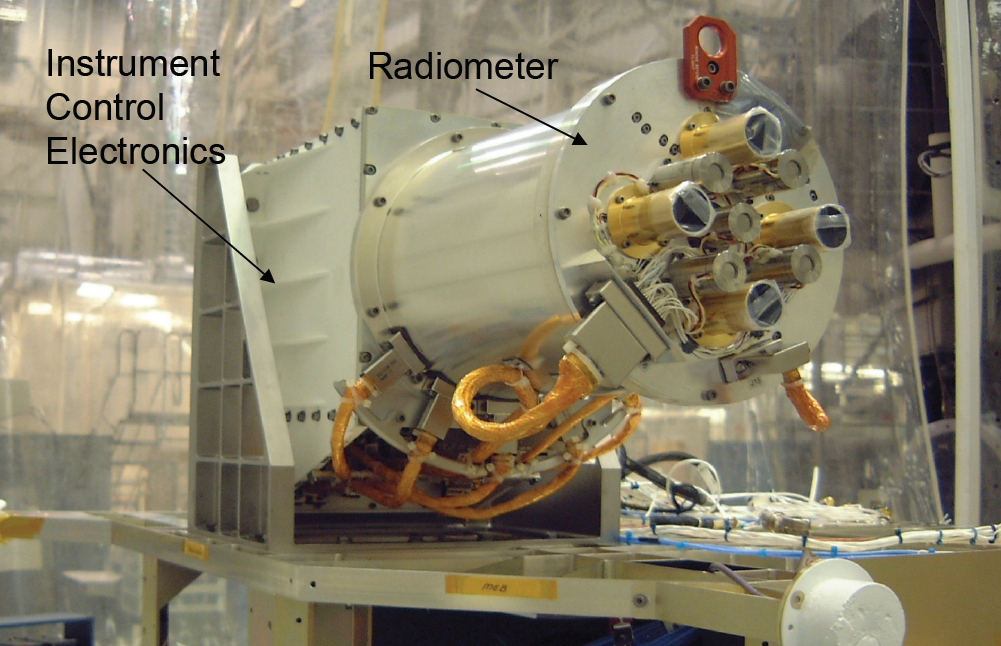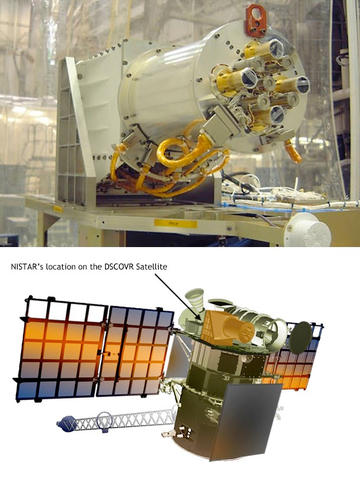Deep Space Climate Observatory (DSCOVR)

Telescope Details
Location
The DSCOVR satellite launched in 2015 and is orbiting around Lagrange point 1, about 1.5 million kilometers from Earth.
Purpose
DSCOVR monitors the flow of charged particles from the Sun, or solar winds, which are critical to space weather alerts and forecasts. NISTAR, an instrument that measures the outgoing radiation from Earth, resides on DSCOVR and offers the first continuous daylight observations of Earth’s surface. It measures the light reflected and emitted at infrared, visible and ultraviolet wavelengths to help monitor seasonal changes important to climate science. The instrument observes the Earth as if it were a planet in another solar system, or exoplanet. NISTAR was built by Ball Aerospace and Technologies Corporation, NIST, Scripps Institute of Oceanography and NASA.
NIST’s role
NISTAR uses NIST’s very stable “electrical substitution” measurement approach, converting incoming radiant energy to heat inside an enclosure and then measuring the electric heat needed to maintain that space at a constant temperature. A series of components separate the Earth’s radiant power from reflected solar energy by making measurements in three overlapping wavelength bands in four channels every minute, providing unique information specifically about the Earth that is important for climate studies.
Significant discoveries
NISTAR has provided unique perspectives on cloud and surface reflections, effects of vegetation, and measurements relevant to exoplanet studies in general.
Other interesting facts
DSCOVR is a refurbished version of the Triana satellite, first proposed in the late 1990s, which was controversial and never launched under that name.
Supported by
NOAA, NASA and the U.S. Air Force
Operated by
NOAA
Media


